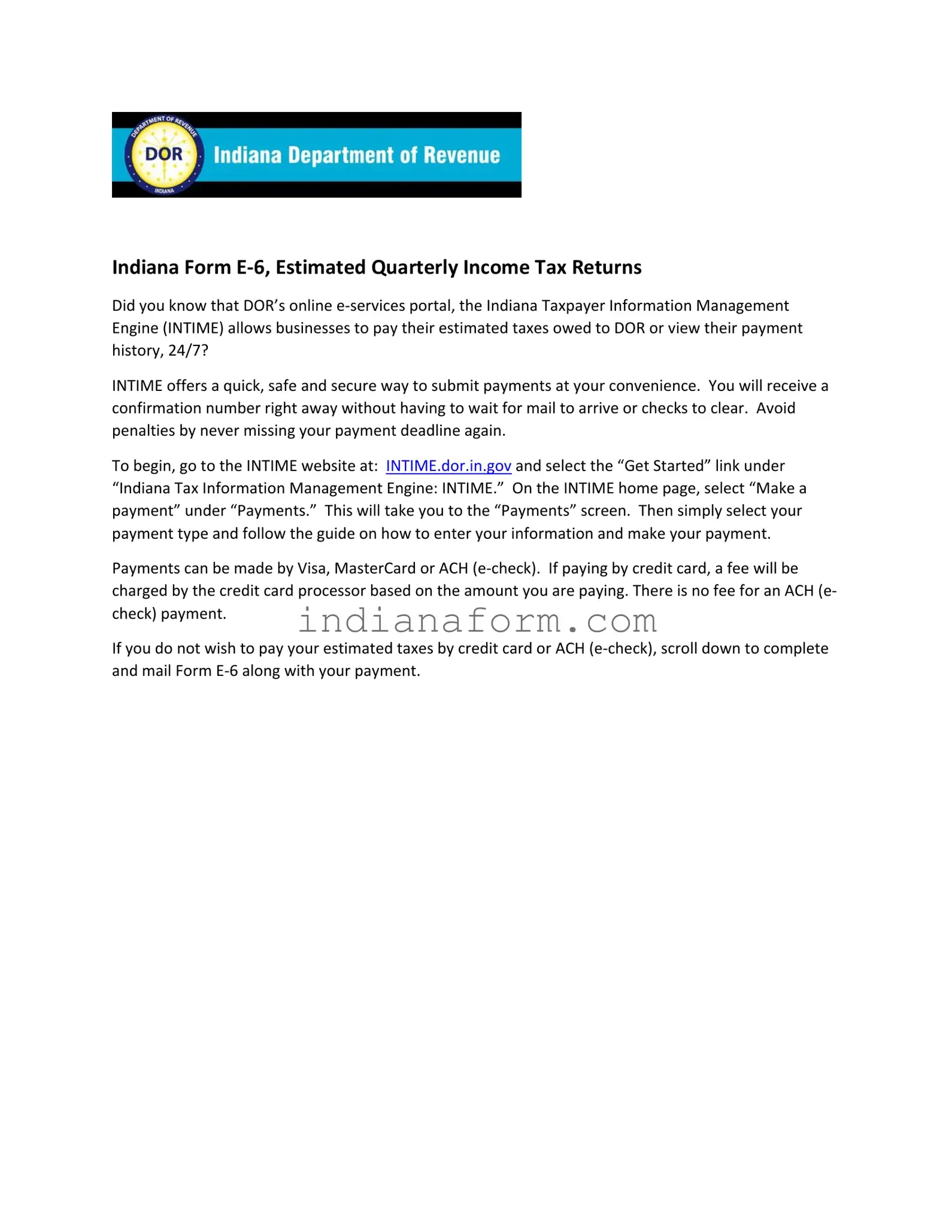What is Form E-6 and what is its purpose?
Form E-6, issued by the Indiana Department of Revenue, serves multiple roles in the administration of Indiana corporate state taxes. Its primary functions include opening a new estimated account for corporations or nonprofit organizations to receive preprinted Corporate Estimated Quarterly Income Tax Returns (Form IT-6), making initial or subsequent quarterly income tax payments, and ensuring timely payments when an extension for filing the annual return is requested. This form helps streamline the estimated quarterly tax payment process and ensures organizations meet their tax obligations efficiently.
Who needs to file Form E-6?
Corporations or nonprofit organizations required to make estimated quarterly income tax payments in Indiana need to file Form E-6. If a corporation has never paid estimated tax or filed an annual Indiana corporate income tax return, or if there's a change in the corporation's mailing address, this form must be submitted. Additionally, taxpayers who wish to make a payment to an already established estimated account also use this form.
How can I submit Form E-6 and what information is needed?
Form E-6 can be mailed to the Indiana Department of Revenue, Corporate Tax Division. It requires various pieces of information, including the corporation's Federal Employer Identification Number (FEIN), Indiana taxpayer identification number, name, current mailing address, county, and the tax year ending date. If submitting a payment with this form, the check should be made payable to the Indiana Department of Revenue in U.S. funds, noting the quarter and amount of payment.
When are Form E-6 and the estimated quarterly income tax payments due?
The due dates for submitting estimated quarterly income tax payments and Form E-6 are April 20, June 20, September 20, and December 20 of the tax year for those filing on a calendar-year basis. For fiscal-year filers, payments are due on the 20th day of the fourth, sixth, ninth, and 12th months of the tax year. Organizations that operate on different annual filing schedules should consult the IT-20 Corporate Income Tax booklet for specific deadlines.
What happens if I miss a payment or fail to pay the correct amount?
If at least 90% of the tax due is not paid by the original due date, a penalty may be assessed unless the remaining balance plus interest is paid in full by the extended due date. Additionally, an underpayment penalty of 10% may apply if the quarterly estimated tax payments are less than the required minimum. Taxpayers can reference Schedule IT-2220 and Income Tax Information Bulletin #11 for details regarding underpayment penalties and calculations.
Can I view or make estimated tax payments online?
Yes, corporate taxpayers can verify their estimated tax payments, balances, and payment history online by visiting the Indiana Department of Revenue’s website. This online service requires knowing the taxpayer’s name, FEIN, current street address, and last payment amount. Payments can also be made through this portal, providing a convenient alternative to mailing physical forms and checks.
What should I do if I don't need preprinted Form IT-6 returns?
If preprinted Form IT-6 returns are not needed, taxpayers should indicate this on Form E-6 by selecting the appropriate option and providing a brief explanation. This might occur if estimated payments are not required for the current year or if the taxpayer opts for electronic payments. Including clear communication on the form ensures the Indiana Department of Revenue can accurately process and acknowledge each taxpayer’s situation.


